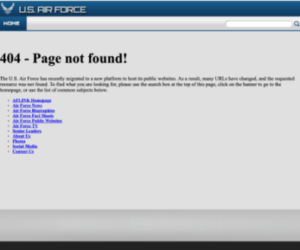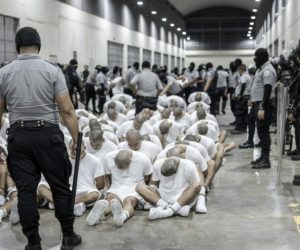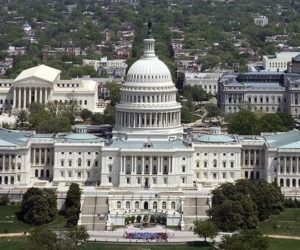Saturday is a red-letter day in Washington State. Its legislative body entered into a special 24-hour (read: rubber-stamp) session designed to chop about a half-billion-dollars from the 2009-2011 budget. It’s the first special, or extra-ordinary, session called by the Governor since 2003.
This is an opaque rush job.
Governor Christine Gregoire announced the special session late on Thursday, after a closed door session with legislative leaders. Gregoire asserted that the bipartisan group of legislative leaders had agreed to “about $584 million in savings.”
This special session is a rush job because once January rolls around, there will be a brand new, regular, 105-day, legislative session. With a new legislature. The Governor noted in her special session declaration (pdf) that “legislative action is needed to avoid a deficit in the State General Fund at the end of the current fiscal period on June 30, 2011.”
The only explanation given for the rubber-stamp session (House Ways and Means vote: 18-0) — one where the 188-page House budget bill was not made public until 11 am, after the House Ways and Means Committee met at 10 am — was the Governor’s assertion that “time is of the essence.”
However, as in DC, what has to be in play is the change in composition of the legislature, even though the change is less radical than inside the Beltway. Prior to November 2nd, the Democratic majority was 31-18 in the Senate and 61-37 in the House. With the final recount decided earlier this month, the Democratic majority dropped to 27-22 in the Senate and 56-42 in the House. One of those casualties was House Ways and Means Chair Kelli Linville of Bellingham.
Today’s Agenda
Here’s the bill summary for HB 3225 (remember, this was made public after the hearing):
Appropriations are modified for the 2009-11 biennium. Near General Fund-State appropriations are reduced by $490.4 million, while the total budgeted amount is reduced by $336.5 million.
Technical adjustments are made to some appropriations to reflect vetoes of provisions in the 2010 supplemental budget (ESSB 6444).
Appropriation: The bill contains multiple appropriations. Please refer to the bill and supporting documents.
Other bills scheduled for vote today include HB 3224, Suspending the child support pass through payment (HB 3224 bill report, pdf), and HB 3223, Establishing a temporary penalty and interest waiver program for certain excise taxes administered by the department of revenue (HB 3223 bill report, pdf).
- House Ways and Means Agenda and Docs
- Senate Ways and Means Agenda and Docs – Taped by TVW for later broadcast (no live stream)
What’s Being Cut?
On Friday, the Seattle Times published a document shared by someone in the legislature — a summary of the cuts as detailed by the House Ways and Means Committee. Almost two-thirds of the cuts relate to K-12 and higher education. I think it’s important to point out right here that the state has only one constitutional mandate: education.
For example, here’s one way money is being moved from education to general services:
Part of agreement calls for taking $208 million in federal aid intended for teacher and law enforcement jobs and sticking it in the general fund to help pay the state’s day-to-day expenses.
According to OFM in May, approximately $30.5 billion of the 2009-2011 state operating budget is supported by General Fund-State (GF-S) tax and fee revenues and reserves.
Here’s what the HB 3225 summary released on Friday said about “Near General Fund-State = GF-S + ELT” reductions:
- Total Public Schools – reduced by $260,356,000 – 53% of the total
- Higher Ed – reduced by $51,088,000 – 10% of the total
- DSHS – reduced by $74,652,000 – 15% of the total
- Department of Corrections – reduced by $48,424,000 – 10% of the total
- Washington Health Care Authority – $27,724,000 – 6% of the total
- Natural Resources – reduced by $17,035,000 – 3% of the total
- Judicial – reduced by $4,266,000 – <1% of the total
- Total Government Operations – reduced by $3,742,000 – <1% of the total
- Legislative – reduced by $3,067,000 – <1% of the total
Here’s the spending breakdown as presented by Olympia in 2009 (pdf, page 4):

Questions that provide context for today’s news that I can’t find answers to in any of the reporting on this issue:
- Where has the governor and legislature made cuts since the 2009 budget was passed? In other words, given that today’s cuts appear to fall disproportionately on public education, is that because public education has escaped cuts until now? Likewise, look at government operations: about 8% of the 2009-2011 budget but less than 1% of the cuts proposed today. Is that because government operations has already taken a big hit?
- What is the decision-making process being used to determine cuts? Where is the cost-benefit analysis?
- What efforts has the state made to elicit budget-saving ideas from employees?
- What efforts has the state made to elicit budget-saving ideas from citizens?
If the general fund-supported part of the state operating budget for 2009-2011 is currently $30.5 billion and the current shortfall is about $1 billion, that’s approximately a 3 percent shortfall (the 2009-2011 budget as passed, pdf).
However, this shortfall has to be put in context, but I can’t find that context online (and I’m a pretty good Googler).
When the 2009-2011 budget was passed, the Office of Financial Management wrote (pdf):
For the 2009-11 biennium, the anticipated cost to maintain current programs, including caseload growth in entitlement programs, was $37.0 billion.
[…]
The budget included $94 million for additional costs of employee health care coverage in K-12, higher education, and state agencies. Additionally, the budget included $303 million in policy increases. Some of the most significant include: $82 million to maintain the current higher education financial aid policy; $55 million for debt service associated with the 2009-11 capital budget; caseload growth in programs for the developmentally disabled; and $20 million for the final phase of an information technology project designed to improve the efficiency of payments for Medical Assistance vendors.
What has already been cut and when and by how much?
Note: the state has wasted the money provided by the federal government for the Medicaid payment system.
Documents @ Scribd.com
- HB 3225
- Summary Budget Cuts – From The Everett Herald
- Summary HB 3225 – Friday noon, House Ways and Means Committee
- Washington State Budget Process
Known for gnawing at complex questions like a terrier with a bone. Digital evangelist, writer, teacher. Transplanted Southerner; teach newbies to ride motorcycles. @kegill (Twitter and Mastodon.social); wiredpen.com
















